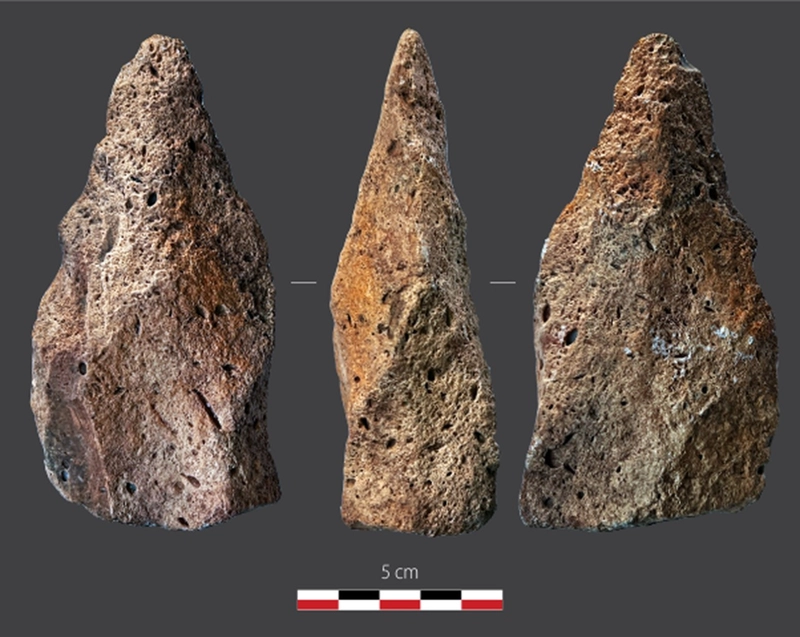
In Oman, archaeologists unearthed stone axes, eggshells, skeletal remains, and some rock carvings. Additionally, they discovered an ancient riverbed that provides clues about the region’s climate.1
The Institute of Archaeology of the Czech Academy of Sciences (CAS) in Prague recently concluded its third excavation season in Oman, leading a groundbreaking archaeological expedition that uncovered fascinating discoveries shedding light on the earliest history of the world’s largest sand desert.
Comprising over 20 geologists and archaeologists, the team focused on uncharted desert regions of the Sultanate of Oman, with two teams operating in separate provinces. The researchers aimed to uncover the secrets buried beneath the arid landscape.
In the Rub’ al Khali desert, located in Dhofar, the team made a significant discovery of stone axes dating back to the period of Homo erectus migration out of Africa, which occurred between 300,000 to 1.3 million years ago. This finding highlights the natural migration corridor that the Arabian Peninsula played from Africa into Eurasia.

Further exploration in the area revealed other interesting remnants of the past, including eggshells belonging to extinct ostriches, providing insight into ancient fauna that once roamed the region. The team also discovered a fossil dune and an old riverbed, suggesting a time when the climate in Arabia was much wetter. By employing four different dating methods, the scientists were able to reconstruct the climate and history of this vast sand desert.
As the team progressed, they encountered triliths, enigmatic stone monuments similar to Stonehenge but on a smaller scale. These ritual structures from approximately two thousand years ago raise questions about their purpose and the civilization that erected them. Through radiocarbon dating and spatio-temporal analysis, the researchers hope to unravel the mysteries surrounding these ancient monuments and shed light on the culture that thrived in southern Arabia during that era.
In the province of Duqm, the second expedition team focused on a Neolithic grave dating back 7,000-6,600 years ago, containing the skeletal remains of several dozen individuals within two circular burial chambers hidden within a megalithic structure. The team plans to conduct isotopic analyses of shells, bones and teeth, and to gain insight into the buried population’s diet, natural environment, and possible migrations, contributing to our understanding of human adaptation to climate change during that time.
Adjacent to the grave is a remarkable collection of rock engravings, serving as a pictorial record of settlements spanning from 7,000 years ago to 1,000 years ago. The researchers also investigated sites where stone tools were produced during the Late Stone Age, providing further evidence of ancient human activity in the region.
By utilizing advanced scientific techniques such as radiocarbon dating and cosmogenic radionuclide dating, this international team of archaeologists and geologists is unveiling the secrets of Oman’s desert. Through their groundbreaking efforts, they are gradually uncovering a more comprehensive understanding of the earliest chapters of our world’s story.
According to the researchers, the findings are important not only to archaeologists and geologists, but also to the general public. They allow for a better understanding of the evolution of the human species and the natural history of the planet. Moreover, they remind people of the richness and complexity of the common cultural heritage.
The Role of the Arabian Peninsula in the Migration of Homo erectus
The migration of Homo erectus through the Arabian Peninsula is a highly interesting topic within the fields of archaeology and anthropology. The Arabian Peninsula played a significant role in the movement of early hominids out of Africa, and it is strongly believed that Homo erectus utilized this path to reach Asia and beyond.
Homo erectus is thought to have originated in Africa approximately 1.8 to 2 million years ago.2 This early human species displayed a marked increase in brain size and complexity and was able to use tools and fire. About 1.5 million years ago, Homo erectus began to spread beyond Africa, with the Arabian Peninsula serving as a vital gateway to Asia.
The migration of Homo erectus out of Africa is believed to have been prompted by a variety of factors, including changes in the environment and population pressures. The availability of new resources and territories may have also played a role in this process.
The Arabian Peninsula provided a natural land bridge between Africa and Asia, making it a logical route for early humans to take. Additionally, during this period, the region’s climate was relatively mild and humid, facilitating travel across the peninsula and making it more sustainable for Homo erectus.
The idea that Homo erectus used the Arabian Peninsula as a migration route is supported by archaeological evidence. Stone tools and other findings have been unearthed in various locations throughout the peninsula, dating back to the early Pleistocene period. These findings resemble those found in Africa and Asia, believed to have been created by Homo erectus. Therefore, it is thought that Homo erectus is responsible for their creation.
The Nefud Desert in Saudi Arabia is one of the most important sites for comprehending the migration of Homo erectus through the Arabian Peninsula. This area contains numerous significant archaeological sites, including Saffaqah, where researchers have discovered evidence of early human activity dating back to around 1.3 million years ago.
- “Czech archaeologists unearth unique finds in Oman“, The Czech Academy of Sciences, www.avcr.cz, April 14, 2023[↩]
- Herries AIR, Martin JM, Leece AB, et al. “Contemporaneity of Australopithecus, Paranthropus, and early Homo erectus in South Africa“, Science, 2020[↩]




